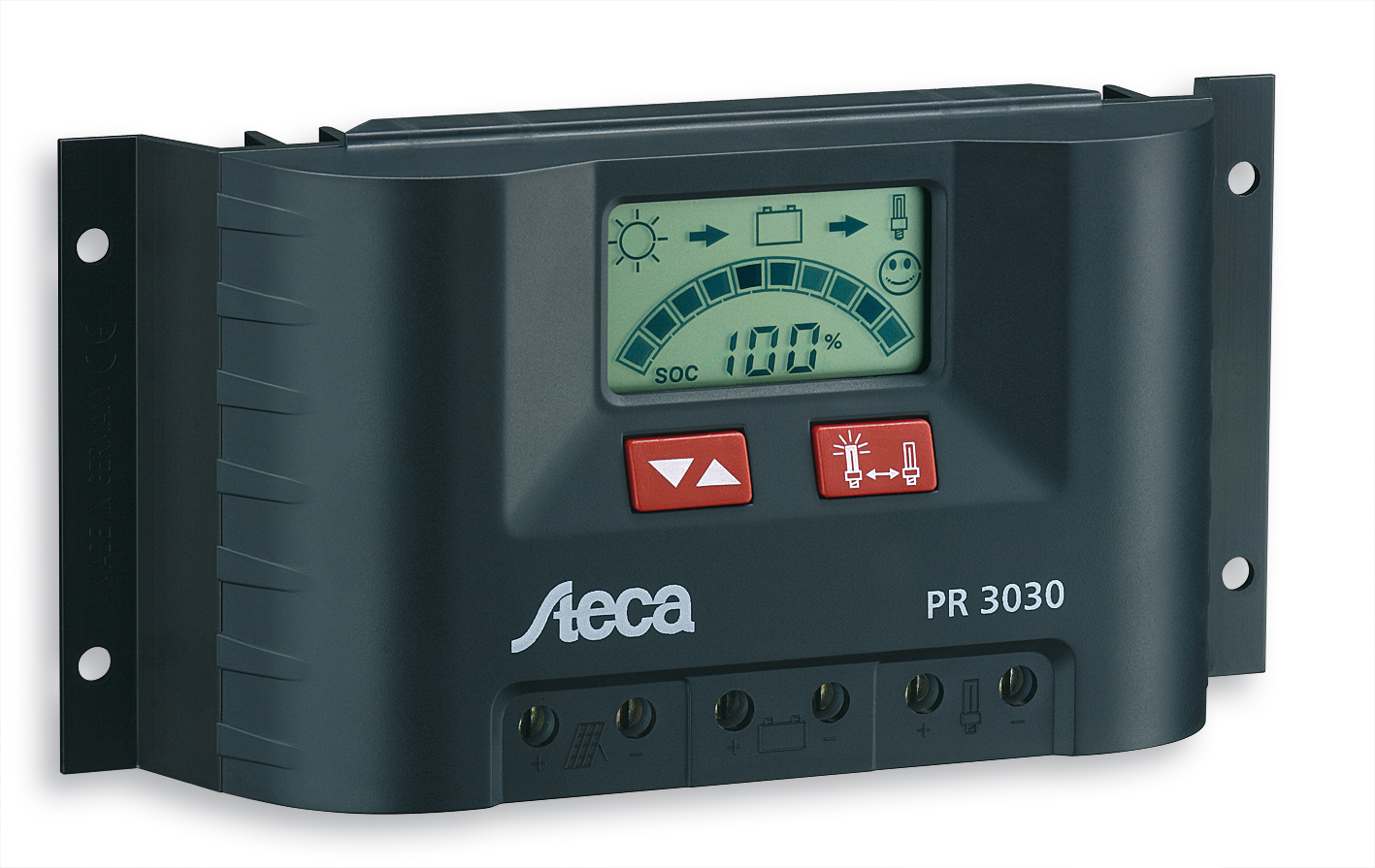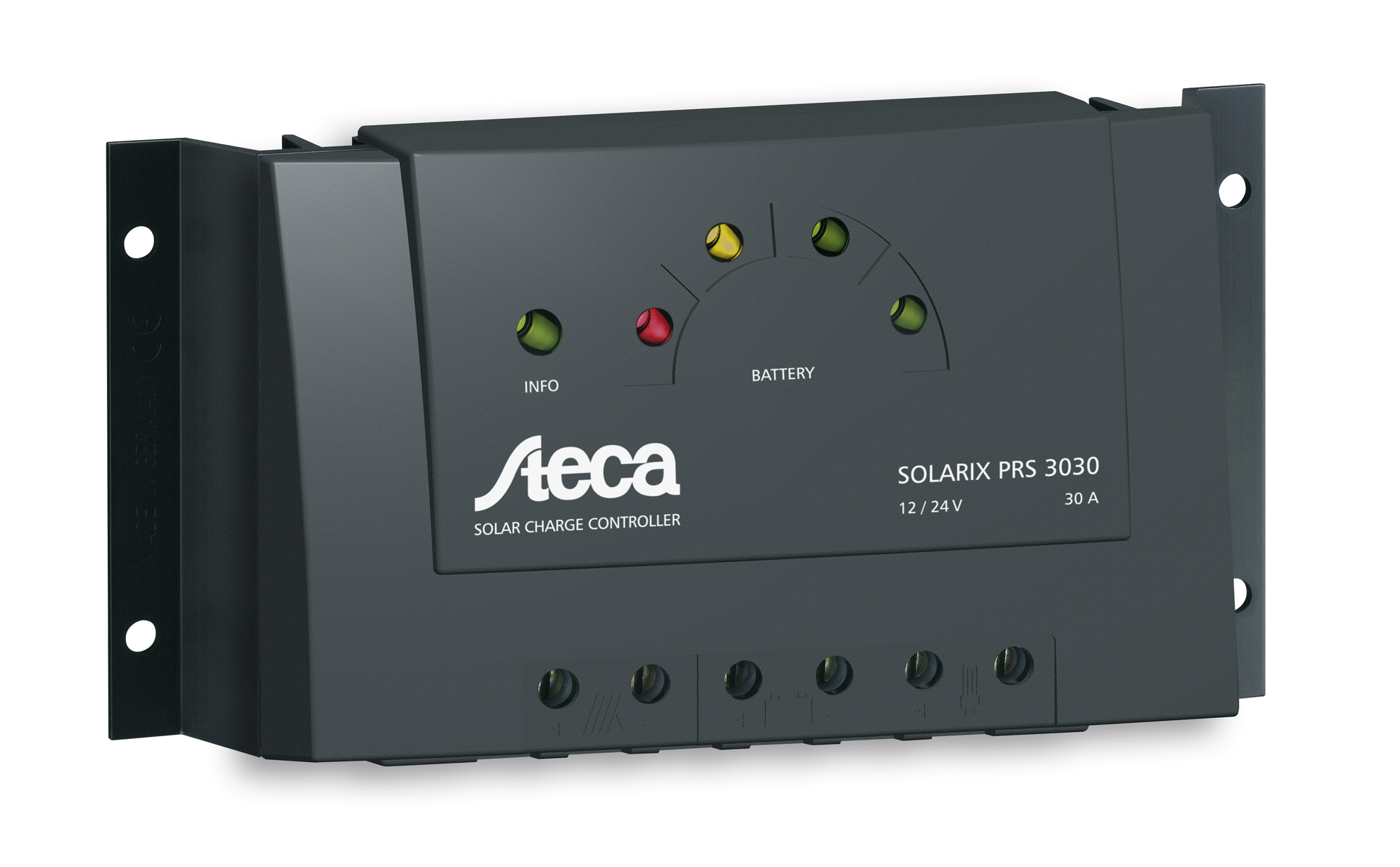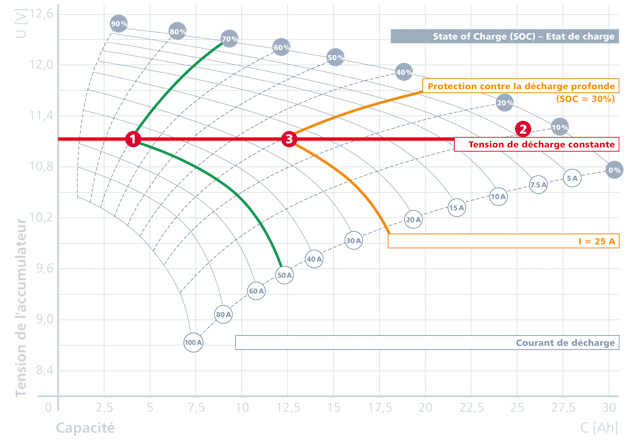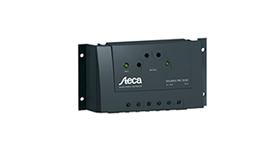Products -> Solar Charge Controllers > Steca > Steca Solarix PRS
Solarix PRS - Solar charge controller
The simplicity and high performance of the Steca Solarix PRS solar charge controller make it particularly appealing. At the same time, it offers a modern design and a convenient display, all at an extremely attractive price.
Several LEDs in various colours emulate a tank display, which gives information on the battery's state of charge. Here, Steca's latest algorithms are employed, resulting in optimal battery maintenance. The Solarix PRS charge controllers are equipped with an electronic fuse, thus making optimal protection possible.
For larger projects, the charge controllers can also be equipped with special functions: e.g. with night light function and selectable charging plateau and deep-discharge protection voltages.
Product features
- Series controller
- Automatic detection of voltage
- Voltage and current regulation
- PWM control
- Multistage charging technology
- Current compensated load disconnection
- Automatic load reconnection
- Temperature compensation
- Common positive or negative grounding on one terminal
- Integrated self test
- Monthly maintenance charge
- Overcharge protection
- Deep discharge protection
- Reverse polarity protection of module, load and battery
- Automatic electronic fuse
- Short circuit protection of load and module
- Overvoltage protection at module input
- Open circuit protection without battery
- Reverse current protection at night
- Overtemperature and overload protection
- Battery overvoltage shutdown
HD Picture - STECA PR 3030

HD Picture - STECA PRS 3030

What does SOC mean?
SOC means the current 'state of charge' of the battery. This is given as a percentage. A battery is fully charged when the SOC is at 100%. The lowest value which can be reached is 0%. In theory, all other values in between can be reached, but most types of batteries should not reach state of charge values of less than 30%. Such values can quickly lead to dangerous deep discharges which decrease the service life of the batteries or destroy them directly. A battery's state of charge should not be confused with its remaining available capacity. The actual remaining capacity depends on many parameters such as the temperature, age and history of the battery and many others. It is possible to gain a rough estimate of a battery's current remaining capacity by multiplying the correct state of charge of the battery by its rated capacity. As the age of the battery increases, however, the rated capacity can change significantly, which means that the prediction of the available capacity can be strongly distorted.
How does Steca's state of charge determination work?
Steca's algorithm for determining a battery's state of charge is a combination of various methods which ensure that the SOC is calculated accurately enough and delivers reliable, stable values over a long period of time. Furthermore, attention is paid to making a calculation method which can be carried out simply and at a low cost in various solar charge controllers. Years of experience in the research and development of battery state of charge algorithms has led to an auto-adaptive 'fuzzy logic' algorithm. This includes the age and usage history of the battery in the calculation as well as the other important parameters. The battery voltage and its currents and the temperature are constantly measured as accurately as possible by the solar charge controller. During a learning phase, the solar charge controller estimates the state of charge on the basis of experience values.
At the same time, the controller monitors the behaviour of the battery and adjusts various parameters to the current system. The learning phase lasts for a few cycles. The advantage of this method is that it makes it possible to respond dynamically to the requirements of the system and individually adjust the battery maintenance to the requirements of every individual system. This feature explains the high performance and reliability of the Steca battery state of charge algorithm. At the same time, this algorithm guarantees optimum battery maintenance, which is reflected in the long service life of the battery. In addition, the user benefits from the fact that the battery's current state of charge can be displayed, which means the user constantly has optimal control over the system.
Why is a state of charge determination so important?
During charging, the solar charge controller has to know when the battery is fully charged so that it can protect it against overcharging at the right moment and in the correct manner. When discharging the battery it is equally important to know the state of charge in order to protect the battery against harmful deep discharge. In order to carry out this function, there are various criteria which can indicate how full the battery is at a given time. Some of these criteria are better suited than others. The simplest and most common criterion is the voltage of the battery. With this method, a fixed charge cut-off voltage is defined. When this voltage is reached, charging is stopped. A fixed deep discharge threshold is also defined. If the battery voltage falls below this value, the load is switched off. This method is simple, since the voltage of the battery is easy to measure precisely, yet it is not ideal for most types of batteries because their state of charge does not change in direct proportion to the voltage. Low discharge currents are common in solar power systems in particular. This leads to inadequate battery maintenance if fixed voltage values determine the charging or discharging processes. The full-charge and deep-discharge thresholds provide better solutions, for the battery currents are taken into account alongside the voltage. But this method does not allow the state of charge to be determined accurately either, since many important factors are not considered. Only if the state of charge is calculated precisely is it possible for the solar charge controller to treat the battery correctly, to end a charge cycle using the solar module at the correct time and to switch off a load neither too early nor not too late. For this reason, Steca has developed a high-performance algorithm with which the state of charge can be calculated with a sufficient degree of accuracy and the battery can be optimally protected.

source : http://www.steca.com/



